Local photographers on the frontline of Duterte’s drug war reflect on the images that moved them most
By Andrew Katz
A teenage “John Doe” lies on a mortuary table, dead from multiple gunshot wounds. A woman cradles her partner under the harsh light of television cameras, beside a piece of cardboard that labels him a “pusher.” A sister, far from home, uses video-calling on her smartphone to mourn with relatives during the funeral of her brother.
These scenes and more have become commonplace across the Philippines over the last eight months of President Rodrigo Duterte’s deadly crusade. More than 7,000 suspected drug users, dealers and innocents have been reported slain by unidentified vigilantes or during confrontations with police. It was only after the high-profile killing of a South Korean businessman at police headquarters—an embarrassment for Duterte—that the president said the police’s anti-drug units would be dissolved. Still, he pledged to continue the campaign.
As the body count has risen, so has the number of photographers who have seen the streets stained by blood. The killings have drawn in veteran foreign photographers like TIME’s James Nachtwey and Daniel Berehulak, whose investigation for the New York Times recently earned a George Polk Award. But it is a strong group of local photographers—comprised of freelancers and those working for the wires—who have committed to keeping the human toll in the public eye. They live in this hell, waiting for the next lead to the next crime scene.
TIME asked 12 of them to select an image from their archives and in their own words, which have been lightly edited for brevity and clarity, explain the scene and its personal significance. Individually, each image represents a unique moment when humanity has been tested. Together, they align statistics with faces and names—making justice a little harder to avoid, whenever dawn comes.
Warning: Some of the following images are graphic in nature and might be disturbing to some viewers
Carlo Gabuco
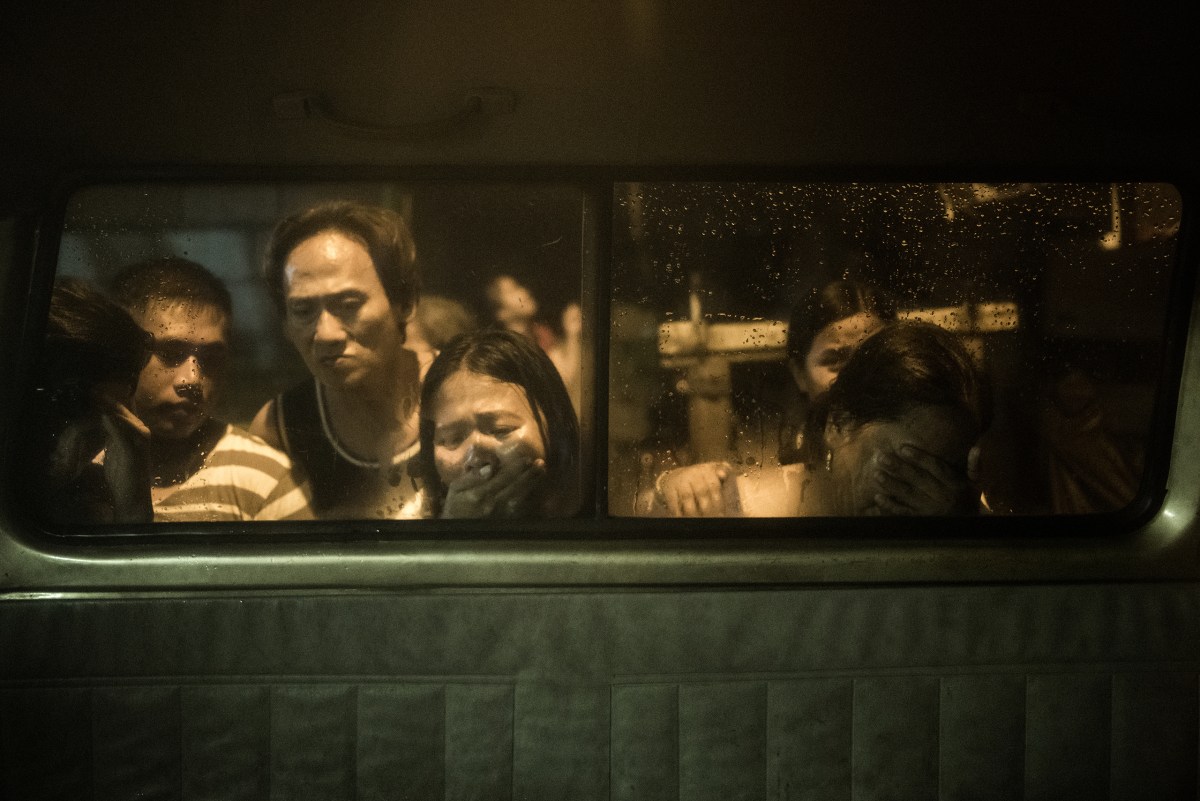
It was the eve of Halloween when five people were killed inside one small house in Mandaluyong City, a poor community east of Manila. It was an intense night for everyone, including me.
Relatives of the victims were hysterical and emotional. I took this photo because, to me, this is the only time a family was able to grieve—even for just a brief moment. Afterward comes the worries about where to get the money to pay for an autopsy and funeral service.
There’s always a moment of disbelief whenever we go to a crime scene and see the victim for the first time, see how they suffered at the hands of their killers. It all changes whenever a family member arrives. I don’t know if it’s the right way to do it, but I always put myself in their position: trying to imagine what they are going through in that particular moment, seeing a loved one die a horrific death. It’s still hard for me to comprehend the level of grief and anger they must feel.
This photo represents how horrible this so-called “drug war” is, and what it does to a family left behind. I always wonder how—scarred by the experience—this will affect the children when they grow up, how this will affect the whole society.
Raffy Lerma
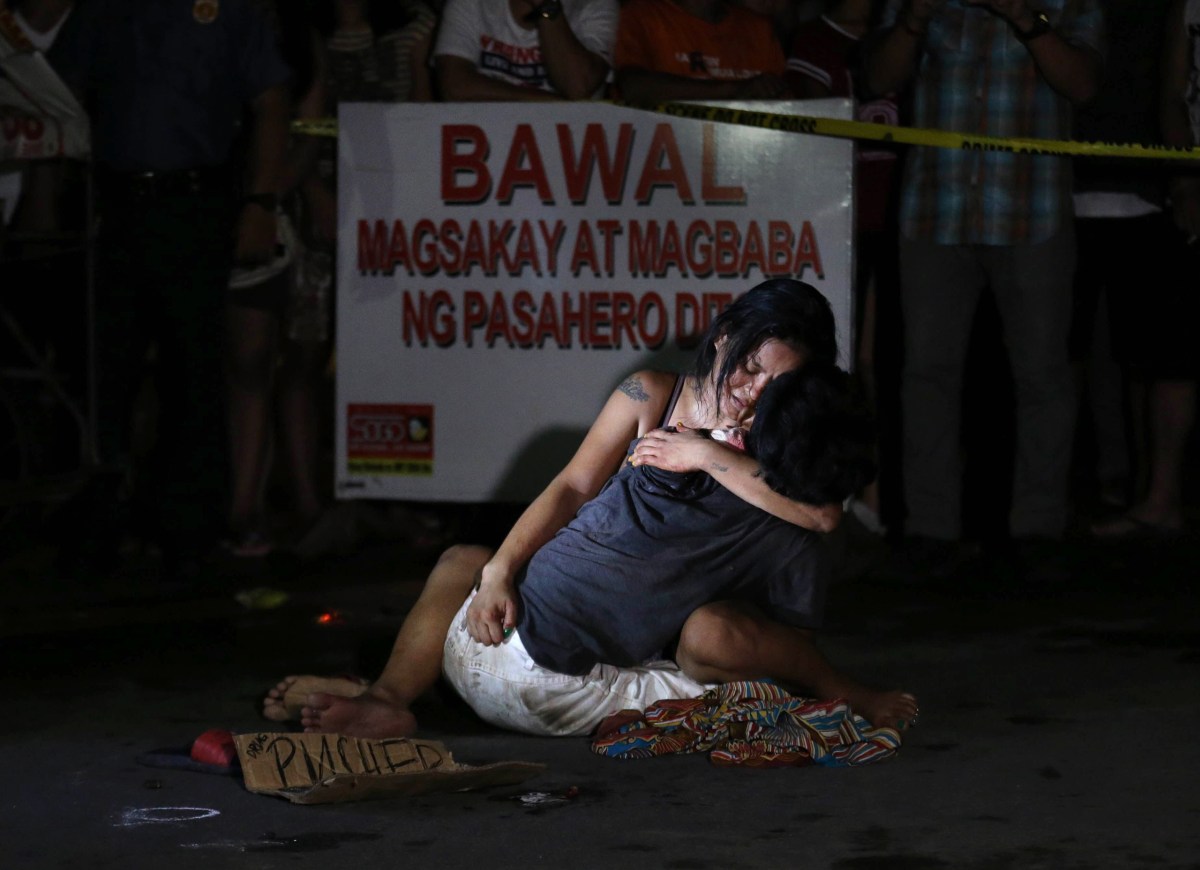
It was a humid July night, and Manila’s graveyard shift journalists had just responded to yet another police call about an alleged drug addict shot to death by vigilantes responding to President Duterte’s call to clean the streets of crime.
I knew this night was different. A police cordon blocked off journalists and bystanders, as Jennilyn Olayres grieved over the lifeless body of her partner Michael Siaron. The murderers left a sign that read “I am a drug pusher, do not copy,” as a crowd, mostly composed of Manila castaways, mingled. According to witnesses, they saw a gunman on a motorcycle driven by an accomplice shoot Siaron. Another person was wounded in the attack. T.V. floodlights and news cameras popped and flashed as the macabre scene played out in front of me.
As a news photographer it was my job to document what was happening, but a part of me that heard Olayres’s pleas for help also died a little. It was raw and gut-wrenching, but I could do nothing but press the shutter button. “That’s enough! And help us!” she cried out to media workers, authorities and onlookers.
“What are you waiting for?,” I asked a policeman, who shrugged before bluntly retorting: “We can’t do anything as he is already dead.”
Crime scene investigators subsequently arrived. To them, Siaron was just another body to be processed. It was the third extrajudicial killing I had photographed that night, and would land on the front page of the nation’s leading newspaper, the Philippine Daily Inquirer.
The area where the killings occurred earned the moniker “Patay City,” or the dead city, a play on its real name, Pasay City. A report about the night’s fourth body, slain in the same general area, came shortly after. Many of my colleagues and I hurried off, but we all had a heavy heart.
Alecs Ongcal
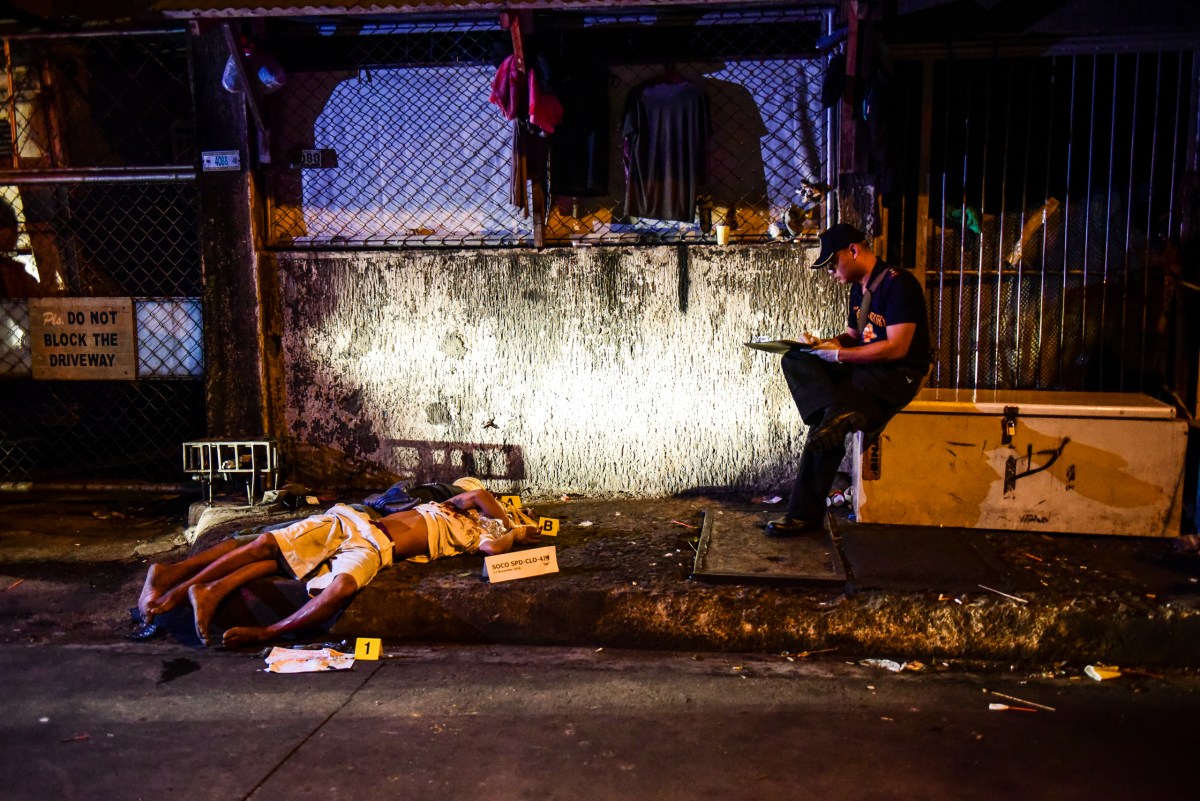
The night shift usually starts at 10 p.m. Cars fill the parking lot and journalists gather at the press corps in the Manila Police District, the main headquarters of the city cops. By then, I need to make sure all my homework and reading is done. I am still a full-time undergraduate student, but taking photos as freelancer. As President Duterte promised, change did come when the war on drugs started.
Now, my nights are spent waiting for phone calls not from my friends, but from homicide investigators. The flashing lights I see aren’t from parties, but from police sirens. And I hear the cries of grieving mothers more than the voice of own my mom.
On a full night we get an average of eight bodies. This photograph was taken after I left a fast food restaurant in Pasay City, close to midnight on Nov. 17. We see the same grief that families cry, the same look on the faces of bystanders and the same script of police answers during interviews. The only thing different are the faces of the dead, but sometimes they start to look the same as well.
Murder has became a norm and lives are as disposable as the cardboard signs that vigilantes use to label the bodies of suspected criminals. When the night shift ends, I take a nap and then rush to my first class in the morning. Sometimes, I even forget to change my shirt.
We talk about the issues in class but forget about them when the bell rings. If they only knew that the screams and cries that I hear at night are louder than that bell. If they only knew they’re walking on the pavement stained with the blood of the man stabbed 10 times last night. If they only knew the bench they’re sitting on is the exact bench the children stood on as they watched the body of their father being carried to the funeral ambulance.
If they only knew, while we spend another day in class, how the life of a family drastically changes forever. But it’s difficult, since the war on drugs hasn’t reached many of us yet.
Basilio H. Sepe
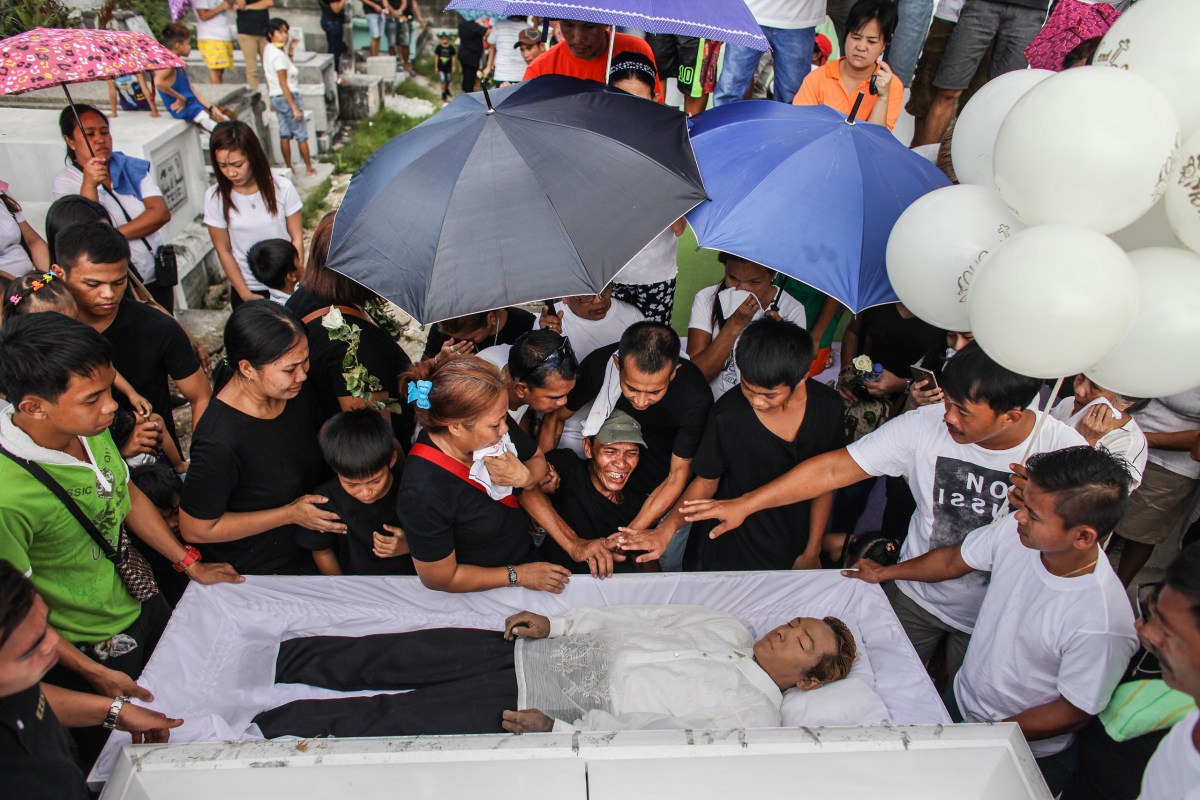
I always admired my countrymen. Not just because of their resiliency as a people, but also how they still appear to be helpful and happy even in times of despair. It is a sight to appreciate and be proud of. But something changed when the so-called war on drugs started. I have been working the night shift for the past several months and have had my fair share of coverage that brings blood and tears. It is saddening and crushing. Situations like these do tend to test the heart. I am seeing my countrymen die even if there is still hope for them to live.
It was at this wake that I knew something was horribly wrong. This was the first time I reported at a funeral. Ronnel Jaraba, 30, was found lifeless along the C3 Road in Metro Manila on Jan. 26. According to his family, he was a former drug user but stopped when he became a father of two kids. His wake took 11 days to complete due to a lack of money. There were a lot of relatives, all mourning his loss, but my attention was focused on his father, Renato. He said Ronnel was his youngest son of three.
It can’t be my child. It can’t be!
He cried, screaming along with the other relatives, and had to be ushered away by his friends so he could calm down. I didn’t realize I was crying while I was taking my shots. It came to a point that even I couldn’t take it anymore. I lowered the camera, went to a secluded place and cried.
Before I left the cemetery, I saw Renato once more. He was calmer, more collected, but I still saw the grief in his eyes. I thanked him before I left and offered my prayers. All the while I was hoping, praying, that these events would stop. It was at this moment that I realized that, as a journalist, it is moments like these that I question my humanity and the reality around me. I cannot be unaffected.
Vincent Go
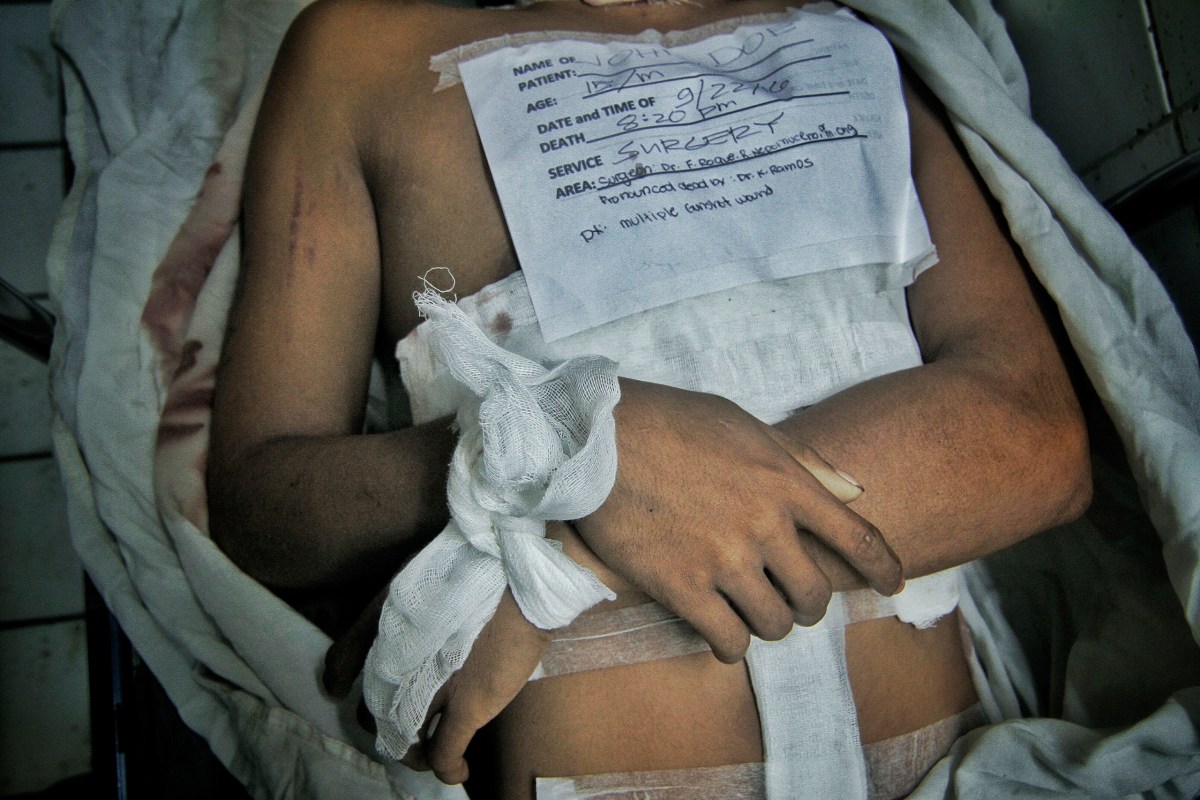
Estimated to be about 15 years old, this boy on a mortuary table in September 2016 is another life lost among the thousands killed in the government’s campaign against illegal narcotics. Witnesses say he ran when the police came to their slum community in Tondo, a district in Manila, and that police opened fire.
He survived the volley of bullets but died on the operating table a few hours later. Nobody came to the hospital to claim and identify the boy.
To me, he represents the thousands who have been killed. He came from the poor sector, maybe with no or little education. He was faceless, voiceless and would not complain of his rights when being violated.
He is just another statistic, another number, another accomplishment report for authorities that claim to be just doing their job.
Hannah Reyes Morales
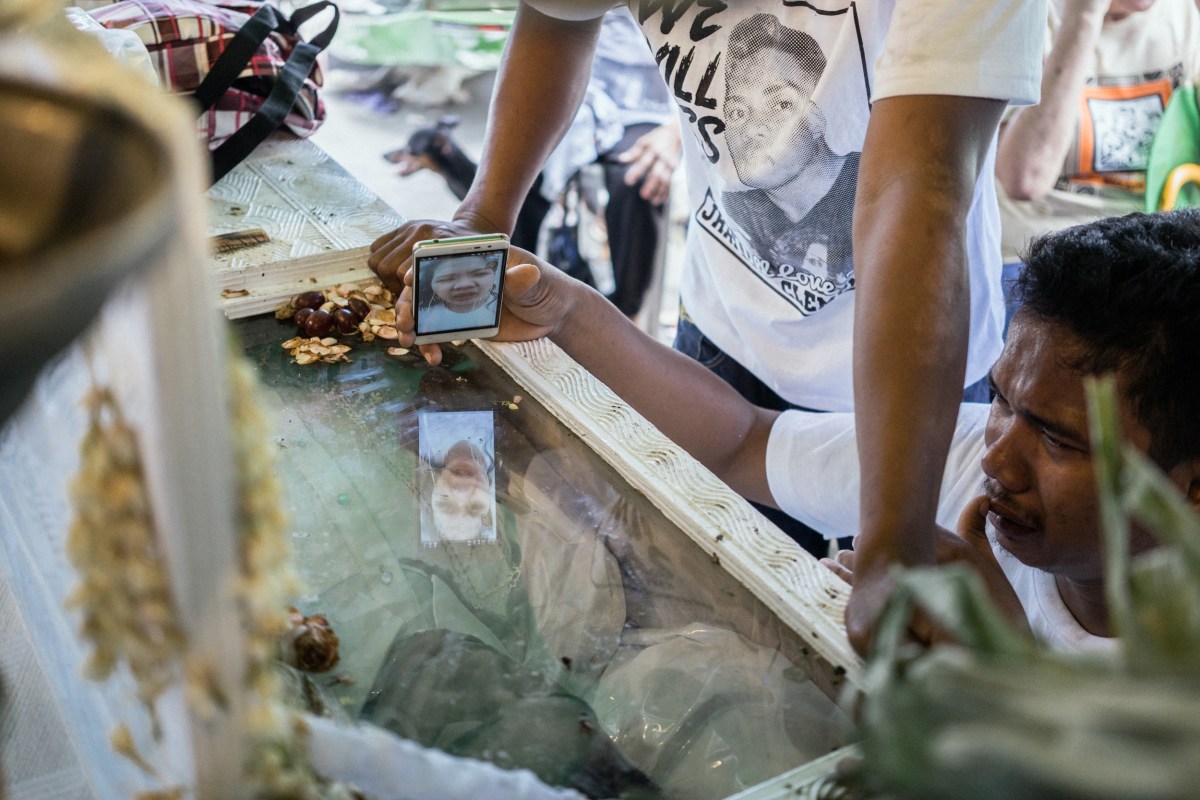
This photograph was taken during Jhay Lord Clemente’s funeral in Manila on Sept. 18. Jhay Lord was shot with his girlfriend Marlyn; when they found the body his dog was there, sitting quietly beside Jhay Lord. The wake took place outside the building where they lived. Their family had shirts and streamers bearing his photo, with the words “We will love you,” “We will miss you” and “Justice.”
Jhay Lord’s story was among my very first encounters on the bloody “war on drugs.” When he died his family could not afford his burial, so I helped them collect enough donations to bury him. But the deaths continued, and more and more families continue to go in debt for burials. There is very little support for the families of those who died.
His sister Jenny Ann, a domestic worker in the Middle East, could not afford to come home to see her brother’s burial. Instead she had to mourn over a video call. On Facebook, she posted a screenshot of her call with her brother’s body. The caption read, “It’s a shame we don’t have a pic together, Kuya (big brother). But the image of your face won’t leave my mind and heart. This is the only photo I have now—it’s a pity it had to be like this.”
Over Facebook, she asked for the photographs of her brother’s body when it was found on the streets, trying to imagine what his death was like. She grieves on her own.
Noel Celis
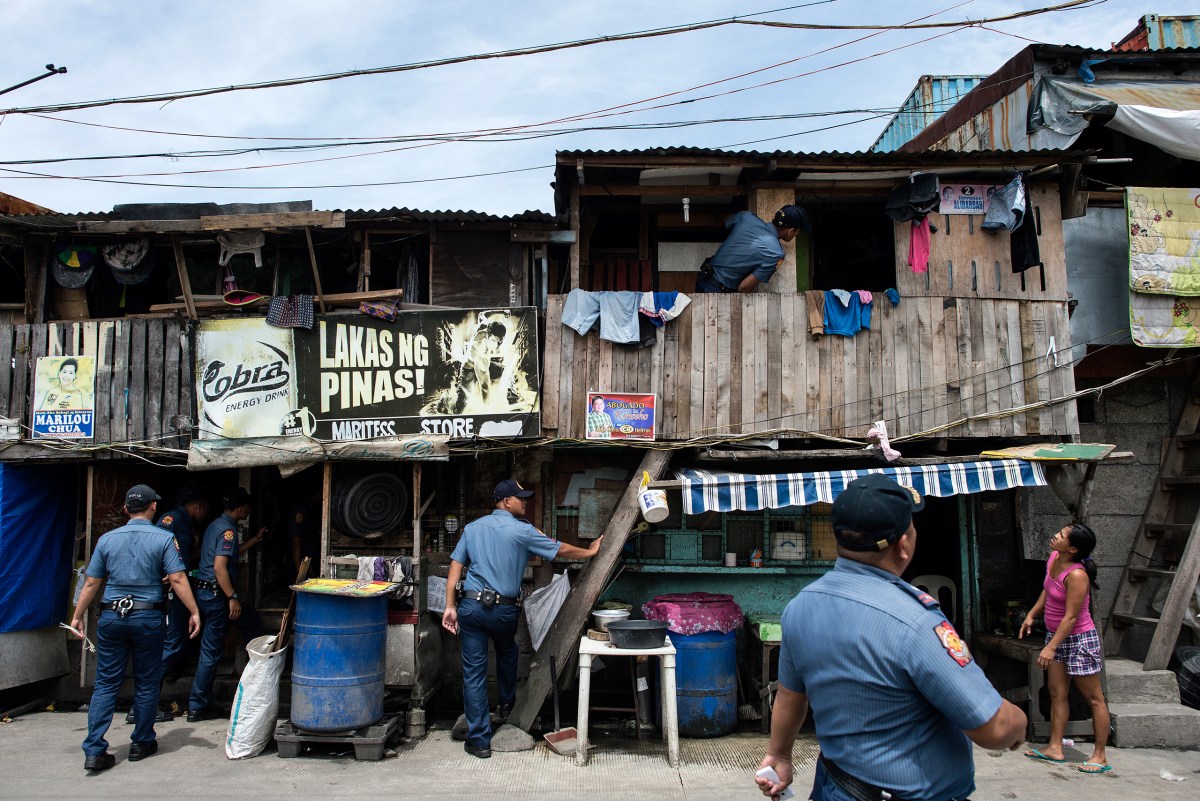
On Oct. 6, I shadowed a police operation known as “Tokhang”—a portmanteau of the words “Toktok” (knock) and “Hangyo” (plead)—at a community of squatters in the Delpan area of Manila. The idea is to knock on a suspected drug user’s house, then the police will plead with him or her to stop or undergo rehabilitation. What I witnessed was different.
The policemen, with guns drawn, would kick each house’s door in and arrest suspicious-looking residents. Without any initial gunshots being heard, the police said that three residents were discovered sniffing shabu—a local name for methamphetamine—and that they had fired at the officers, who retaliated. Then three brothers were suddenly dead.
As a photojournalist, we should always be neutral. It’s hard, as everyone has opinions on different things. It sometimes depends on one’s upbringing, religious belief or the community where the photographer grew up.
After that police raid, I’m not sure if I can still be neutral.
Jes Aznar
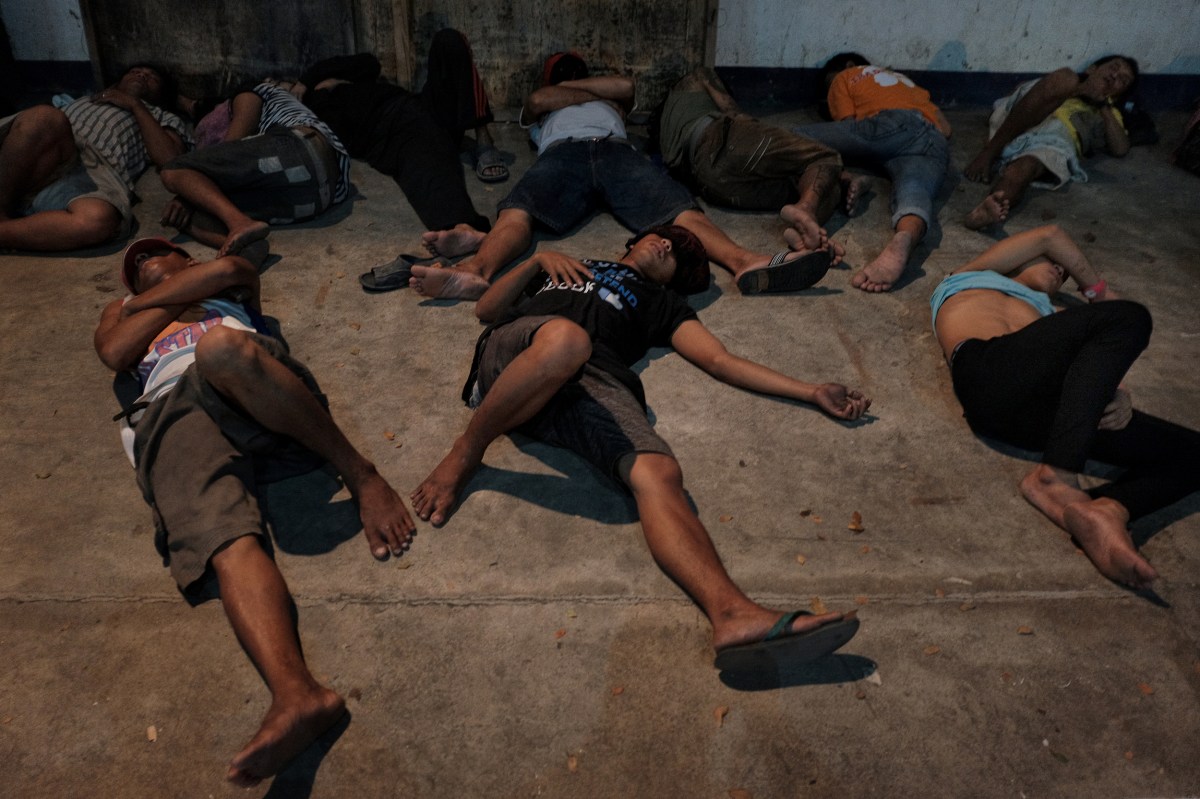
I was already on my third week of covering the nightly killings and police operations involving the so-called “war on drugs” when I arrived at a scene of mass arrests in Quezon City.
It was near midnight and hundreds of alleged residents suspected of using or dealing illegal drugs were lying on the floor of a basketball court inside the police headquarters. Men and women, young and old, all huddled together to get some warmth as they laid down on the cold slab of concrete. Some were already asleep, while others were queuing around tables getting their fingerprints taken and getting “processed.” It brought back memories of images I saw at the concentration camps in Germany.
I asked some of them what they were here for, but they didn’t know. All they knew is that the police came in their communities and loaded them up in vehicles. I asked why did they allow their arrest if they were not doing anything wrong? An old man replied, “how can you argue with someone who is more stronger and have guns?”
This was the very first time I stopped and pondered. What if one of these people was someone I know: a friend, a relative perhaps, or even me? I wondered how this new norm would be for all of us.
Eloisa Lopez
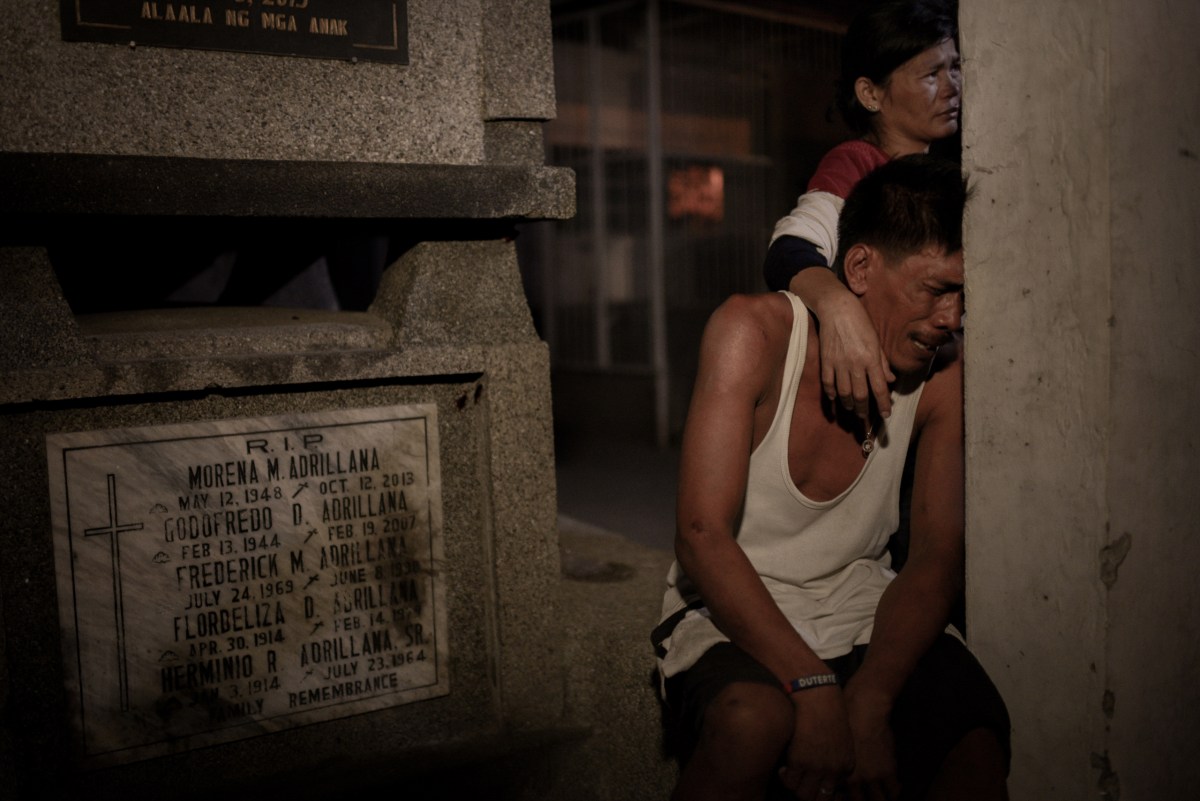
I approached the crime scene in Tugatog Public Cemetery in Malabon on Oct. 21 with my heart beating fast and my mind bracing for horror. It was the same place I first covered a crime scene—a cemetery forever marked in my head with memories of terror and trauma.
I expected a dead body with packs of meth, a gun, blood and gore—criteria that seem to be a template in most reports on the drug war. But a ravaged body of a seven-year old girl—raped and killed beside a grave—turned up instead. Near the body was her grieving father, turned mute by pain and anguish.
Police say the rapist was the father’s friend, a drunk and alleged drug addict. They say he is the very justification of the drug war that takes away thousands of lives and violates human rights. That night, I felt our months-long efforts to humanize and seek justice and sympathy for the victims of the killings were made useless. That night, evil won.
Suddenly, the killings seemed reasonable. Suddenly, I was hoping someone would shoot this man dead—the way cops and vigilantes ruthlessly killed the others. Forget due process, forget a trial. I became exactly like the monsters I fought and hated.
Until I realized you cannot use one crime to justify a thousand others.
Dondi Tawatao
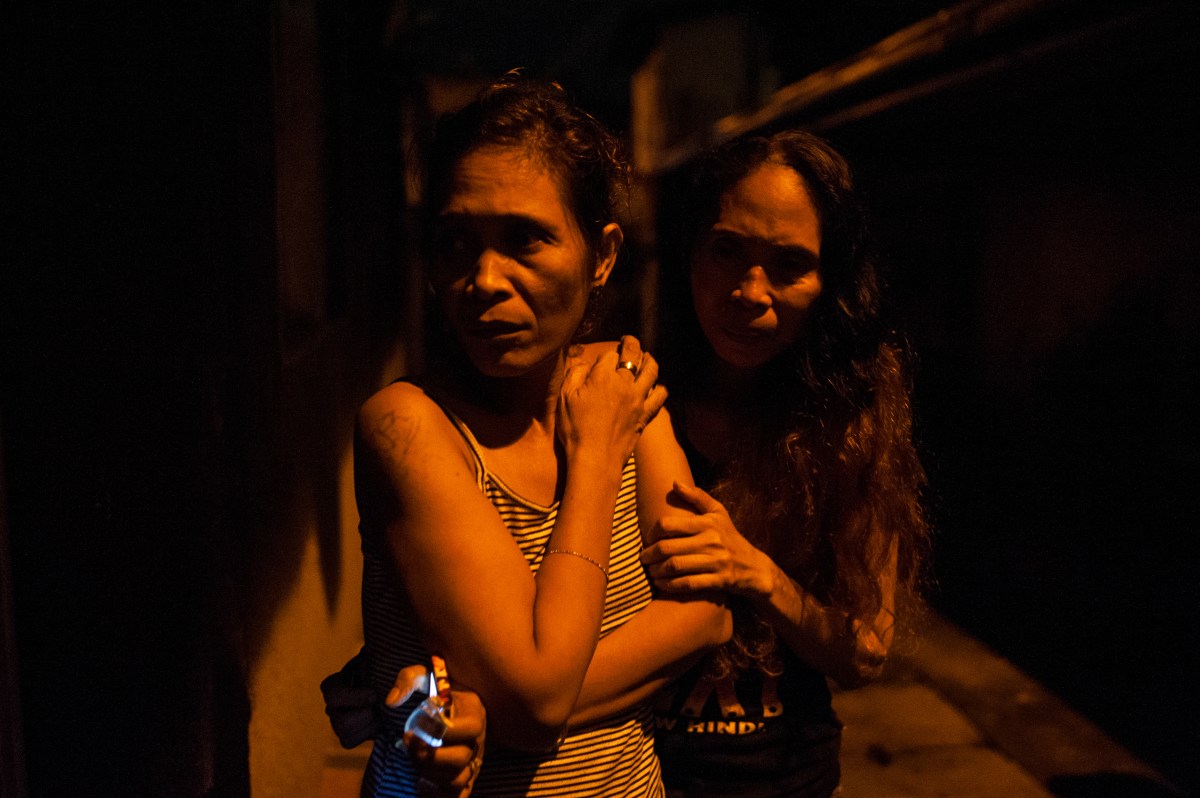
One night last September, we got information through radio reporters that a killing had occurred in the southern part of Manila. We had just came from another crime scene so we had to race there quickly as we didn’t know if the area was already cordoned off by police. When I arrived, police were already there. It was crowded with onlookers and journalists.
I noticed there were two women looking at the scene in an adjoining alley. I walked under the police line to get near them. When I got there I realized they were the next of kin of the victim: a man who we later learned had nothing to do with drugs, but was killed when masked men with long firearms barged into their home and forcibly dragged him onto the street and shot him.
The two women with fear and uncertainty in their eyes are emblematic of every crime scene we come across every day. The drug war has created a disconnect and fear in the communities and has actually made things the opposite: people are afraid of going out at night not because of petty crime and drugs, but because of the police and death squads roving the streets.
Ezra Acayan
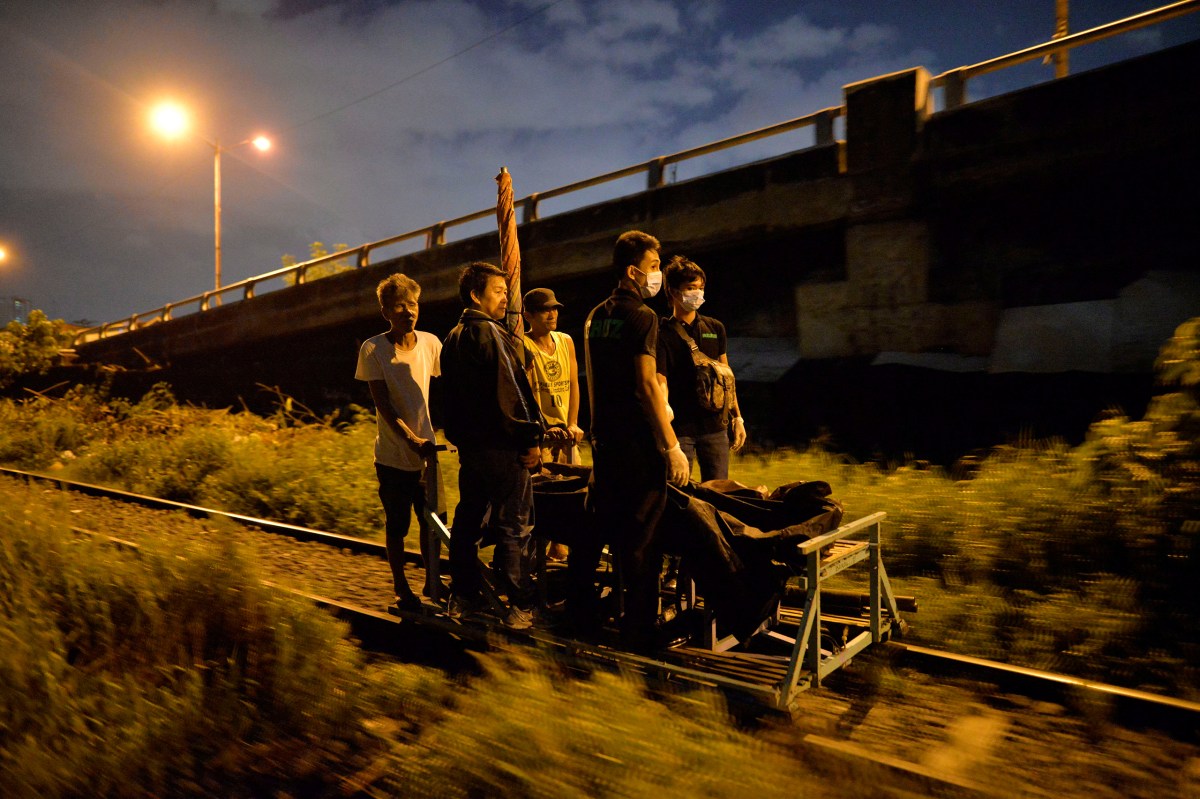
This may not be the most striking or tragic picture that has come out of the killings but this scene, for me, best represents how I feel about the drug war. In mid-August, it shows the bodies of Paul Lester Lorenzo and Danny Laurente being hauled away in a makeshift trolley along a railroad after they were shot dead by police, in what they called an anti-drugs operation.
Residents used a trolley because the bodies could not be reached by the mortuary ambulance. After the bodies were loaded into the trolley, myself and other photographers jumped onto another trolley and rode alongside as we took pictures.
It felt very surreal. A trolley that is normally used by commuters as a cheap alternative to riding the train or bus was now being used to carry lifeless bodies.
I have covered around 200 killings since the drug war began. Everyday scenes in my hometown are now turning into tragic ones. Whenever I go for a drive around town, many places only remind me of the killings.
Kimberly dela Cruz
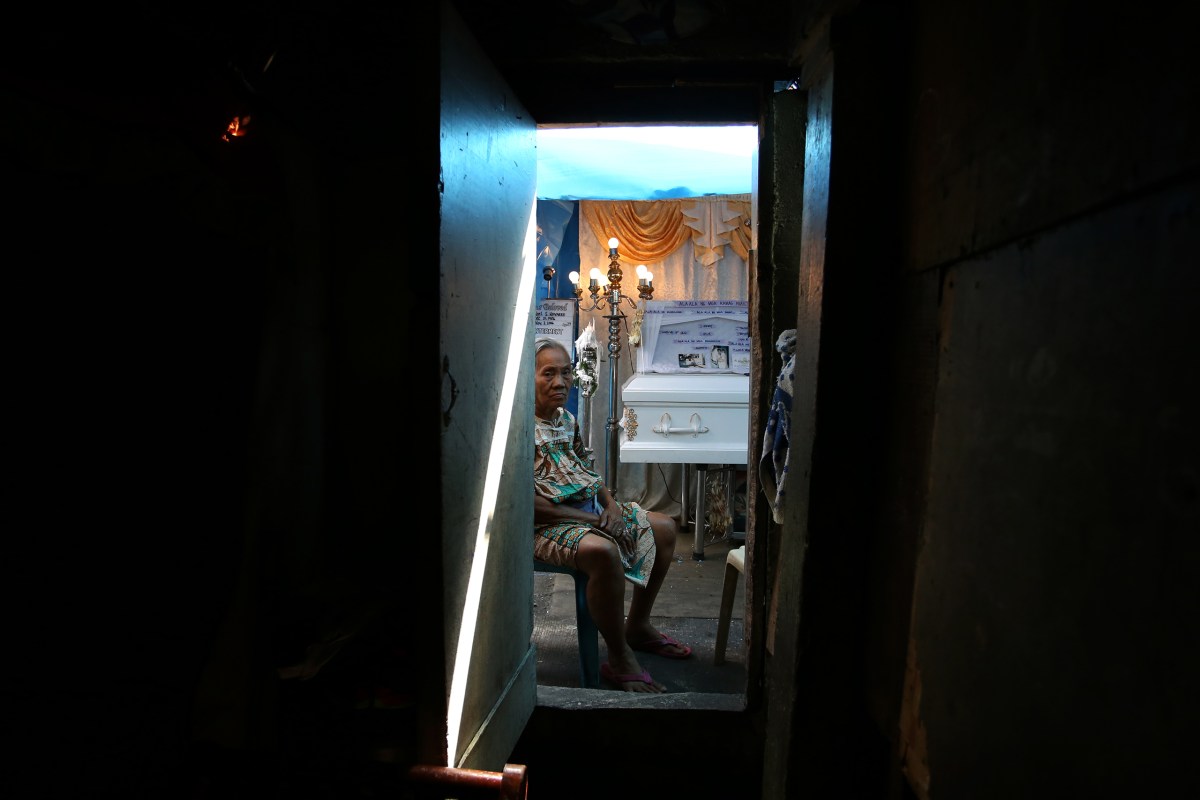
It’s tradition for us Filipinos to have someone watch over the casket during the wake of a loved one. It goes on for days until the money needed for the funeral is raised or everyone in the family has said their goodbye. When I took this photo of Dalisay dela Cruz, I was coming out of the house, having seen the bed where her grandson Noel Navarro used to sleep with his kids.
The light was beautiful and I was thinking of what she told me just moments ago, on how the night he died she was woken up from her sleep from the next room, hearing the commotion of a police operation. She said her grandson was pleading for help, for his daughter. She saw it through a hole in the wall; the cops punched him a couple of times before they shot him.
At 75, Dalisay was the breadwinner of the family, selling vegetables. What little money her grandson used to earn from horticulture, he spent on his kids. They couldn’t proceed with the burial because her son and Noel’s brother were arrested that night. They were struggling to raise money for bail and the funeral. During the wake, she showed me the handful of seeds her grandson gave her the day he died. They have grown into sprouts.
Published on Feb. 23
Andrew Katz is TIME’s International Multimedia Editor. Follow him on Twitter @katz.
